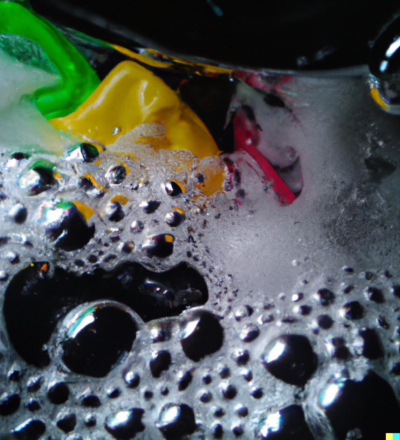Pyrolysis of a post-consumer plastic waste stream (DKR-350) has been performed at a laboratory scale in a fixedbed reactor at 500 ◦C. DKR-350 is a complex mixture of post-consumer plastics comprising polyethylene, polypropylene, polystyrene, polyethylene terephthalate, clogged materials, multilayer flexibles, together with considerable amounts of biogenic and inorganic residues and halogens.
The influence of different washing procedures on feedstock composition and pyrolysis product yields was investigated. Washing effectively lowers the biogenic, inorganic and halogen contents in DKR-350, though does not affect the yield of the desired oil/wax (66 to 69 wt%). 27% of the oil/wax lies in the boiling point range of naphtha and gasoline (< 200 ◦C). During pyrolysis, the oxygen content of the oil/wax is reduced to 8–14 wt%, compared to 10–16 wt% in the feed.
Chlorine analysis revealed that most of the chlorine present in the feed is removed by washing. Nevertheless, the concentration of chlorine in the oil/wax is still high (>150 ppm), showing the presence of recalcitrant organochlorides in the feed. Thus, post-treatment is still required to upgrade it to feedstock for the production of fuels and/or chemicals.
Download your free copy
Our publications are free to access. Simply provide your first name and email address to download.
